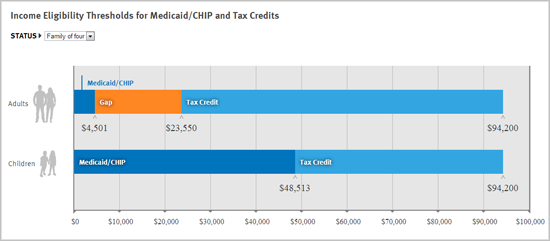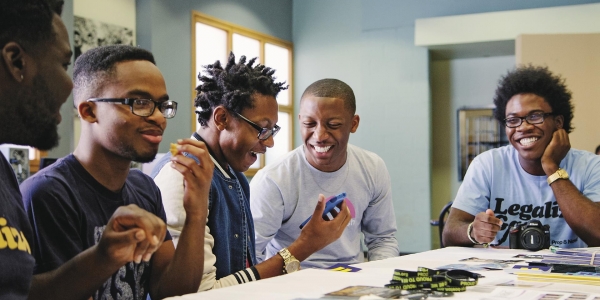20 Years of Discovery: The Women’s Interagency HIV Study
By Anthony Fauci, M.D., Director, National Institute of Allergy and Infectious Diseases (NIAID), National Institutes of Health
Twenty years ago, when most HIV/AIDS patients were men, the National Institutes of Health (NIH) launched the Women’s Interagency HIV Study (WIHS), observing women in the United States who are either HIV-infected or at risk for becoming infected.
 Since then, results from the WIHS have informed unique aspects of care and treatment for HIV-infected women worldwide as HIV/AIDS has spread globally and become equally prevalent among women and men. By observing more than 4,000 volunteers—many of them economically and socially disadvantaged—the WIHS has made vital contributions to our understanding of HIV/AIDS disease progression, key differences in HIV infection between men and women, and the implications of HIV infection for viral co-infections and other diseases.
Since then, results from the WIHS have informed unique aspects of care and treatment for HIV-infected women worldwide as HIV/AIDS has spread globally and become equally prevalent among women and men. By observing more than 4,000 volunteers—many of them economically and socially disadvantaged—the WIHS has made vital contributions to our understanding of HIV/AIDS disease progression, key differences in HIV infection between men and women, and the implications of HIV infection for viral co-infections and other diseases.
The WIHS has also yielded critical insights into how best to treat HIV-infected women. The study demonstrates the remarkably positive impact of combination antiretroviral therapy (ART), introduced in 1996, on survival among women and also identifies factors that impede HIV-infected women from taking lifesaving antiretroviral medication daily as prescribed. Examining the relationship between HIV and its treatment to other diseases has been a major focus of the WIHS with substantial implications for women’s overall medical care.
The study indicates that ART is safe for women co-infected with hepatitis C virus (HCV), an important finding given the prevalence of HIV/HCV co-infection. The study also has found an association between administration of ART and significantly lower rates of infection with human papilloma virus, which can cause cervical cancer, and of precancerous cervical lesions.
Further, the WIHS shows that HIV-infected women are at higher risk for cardiovascular disease than HIV-uninfected women, independent of traditional cardiovascular disease risk factors. And WIHS investigators have established a link between diabetes in HIV-infected women and a class of antiretroviral drugs called nucleoside reverse transcriptase inhibitors.
We continue to build on the study’s solid foundation of scientific insights by addressing new challenges and answering new questions. This year, we added four WIHS sites in the southeastern United States, where the epidemic has become particularly severe. As part of this expanded emphasis on women of the rural South, the WIHS will examine long-term health outcomes for women affected by other diseases—such as cardiovascular, liver, and kidney diseases—which are more prevalent among those infected with HIV.
Meanwhile, the WIHS will continue to address questions pertinent to its core research agenda: How do genetic, metabolic, behavioral, and other factors influence HIV disease progression? What factors influence whether HIV-infected women get care and treatment and maintain long-term control of the virus? What are the health effects of co-infection with HIV and other viruses?
What are the relationships among HIV infection, treatment and other diseases? And what are the long-term outcomes of HIV infection and treatment? We applaud the WIHS volunteers and investigators for their important contributions over the past 20 years—and for their dedication to keep building on this knowledge until together we finally achieve our vision of an AIDS-free generation.
By Anthony Fauci, M.D., Director, National Institute of Allergy and Infectious Diseases (NIAID), National Institutes of Health
Twenty years ago, when most HIV/AIDS patients were men, the National Institutes of Health (NIH) launched the Women’s Interagency HIV Study (WIHS), observing women in the United States who are either HIV-infected or at risk for becoming infected.
 Since then, results from the WIHS have informed unique aspects of care and treatment for HIV-infected women worldwide as HIV/AIDS has spread globally and become equally prevalent among women and men. By observing more than 4,000 volunteers—many of them economically and socially disadvantaged—the WIHS has made vital contributions to our understanding of HIV/AIDS disease progression, key differences in HIV infection between men and women, and the implications of HIV infection for viral co-infections and other diseases.
Since then, results from the WIHS have informed unique aspects of care and treatment for HIV-infected women worldwide as HIV/AIDS has spread globally and become equally prevalent among women and men. By observing more than 4,000 volunteers—many of them economically and socially disadvantaged—the WIHS has made vital contributions to our understanding of HIV/AIDS disease progression, key differences in HIV infection between men and women, and the implications of HIV infection for viral co-infections and other diseases.The WIHS has also yielded critical insights into how best to treat HIV-infected women. The study demonstrates the remarkably positive impact of combination antiretroviral therapy (ART), introduced in 1996, on survival among women and also identifies factors that impede HIV-infected women from taking lifesaving antiretroviral medication daily as prescribed. Examining the relationship between HIV and its treatment to other diseases has been a major focus of the WIHS with substantial implications for women’s overall medical care.
The study indicates that ART is safe for women co-infected with hepatitis C virus (HCV), an important finding given the prevalence of HIV/HCV co-infection. The study also has found an association between administration of ART and significantly lower rates of infection with human papilloma virus, which can cause cervical cancer, and of precancerous cervical lesions.
Further, the WIHS shows that HIV-infected women are at higher risk for cardiovascular disease than HIV-uninfected women, independent of traditional cardiovascular disease risk factors. And WIHS investigators have established a link between diabetes in HIV-infected women and a class of antiretroviral drugs called nucleoside reverse transcriptase inhibitors.
We continue to build on the study’s solid foundation of scientific insights by addressing new challenges and answering new questions. This year, we added four WIHS sites in the southeastern United States, where the epidemic has become particularly severe. As part of this expanded emphasis on women of the rural South, the WIHS will examine long-term health outcomes for women affected by other diseases—such as cardiovascular, liver, and kidney diseases—which are more prevalent among those infected with HIV.
Meanwhile, the WIHS will continue to address questions pertinent to its core research agenda: How do genetic, metabolic, behavioral, and other factors influence HIV disease progression? What factors influence whether HIV-infected women get care and treatment and maintain long-term control of the virus? What are the health effects of co-infection with HIV and other viruses?
What are the relationships among HIV infection, treatment and other diseases? And what are the long-term outcomes of HIV infection and treatment? We applaud the WIHS volunteers and investigators for their important contributions over the past 20 years—and for their dedication to keep building on this knowledge until together we finally achieve our vision of an AIDS-free generation.


.png)




.jpg)













 President Obama addressed concerns on Monday about the slow roll out of the
President Obama addressed concerns on Monday about the slow roll out of the